That litigation technique called hot tubbing: what’s so hot about it?
30 November 2024
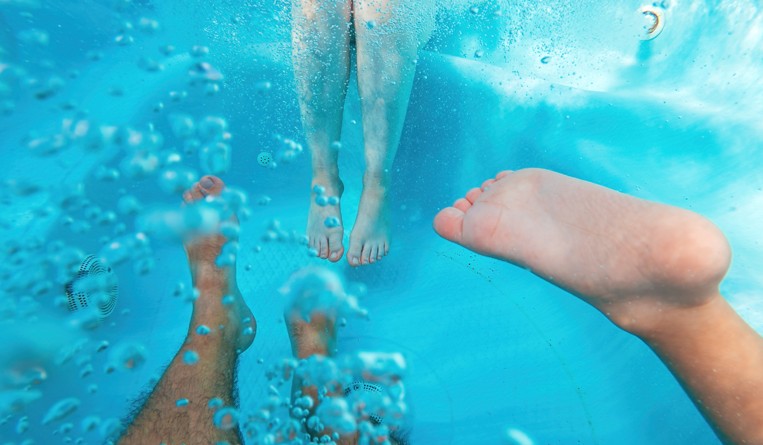
Hot tubbing makes it easier to understand complex issues by allowing expert witnesses to testify simultaneously. Espie Angelica A. de Leon explains its benefits, while also noting challenges like expert dominance and the need for careful management.
Picture this: Two or more expert witnesses, generally from the same or similar fields of specialization, together on the witness stand giving oral evidence concurrently during a hearing. Each expert is asked questions by the other party’s counsel. The other experts get their chance to comment on the responses given by the witness being questioned. The judge also poses questions to each witness.
A far cry from traditional cross-examination. Here, expert witness A is called, gives his report, is cross-examined, re-examined and then released. Witness B is called next, goes through the same motions, is released and then witness C is called, and so on for every expert witness. These people may not be called on a single day in the same hearing; they could be called to the witness box days apart. “Witness A does not get a chance to speak about what witness B, C or D said and so on in all the permutations. We can end up just guessing about the whole technical evidence. It is worse if the experts use different terminology or words,” added Daniel Lim, director in charge of litigation at Joyce A. Tan & Partners in Singapore.
The process described in the first paragraph is a litigation technique called hot tubbing. It is also known as concurrent evidence or concurrent expert testimony.
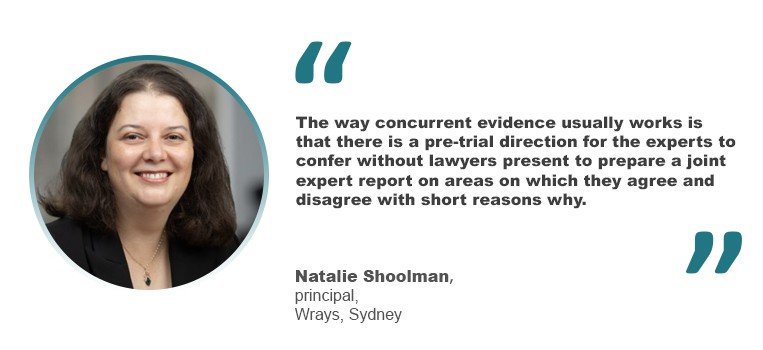
“The way concurrent evidence usually works is that there is a pre-trial direction for the experts to confer without lawyers present to prepare a joint expert report on areas on which they agree and disagree with short reasons why. Often, the experts are given agreed questions proposed by the parties to focus the joint expert report. The joint report then forms the basis for concurrent evidence given in court,” said Natalie Shoolman, principal and head of litigation and dispute resolution at Wrays in Sydney.
Hot tubbing is used when there is expert technical evidence. Its goal is to enable the experts to focus on the key issues given their points of agreement and disagreement and communicate these to the court. This allows the court to better assess the experts’ contrasting opinions on these key issues. Another goal of concurrent expert testimony is to allow the expert witnesses to be heard completely instead of being forced to answer questions from lawyers who may misconceive or misunderstand the evidence they are trying to present.
Advantages of hot tubbing
The advantages are plentiful.
- Hot tubbing saves time since all the steps involved in questioning the expert witnesses are merged into one procedure. This makes the litigation technique cost-saving as well.
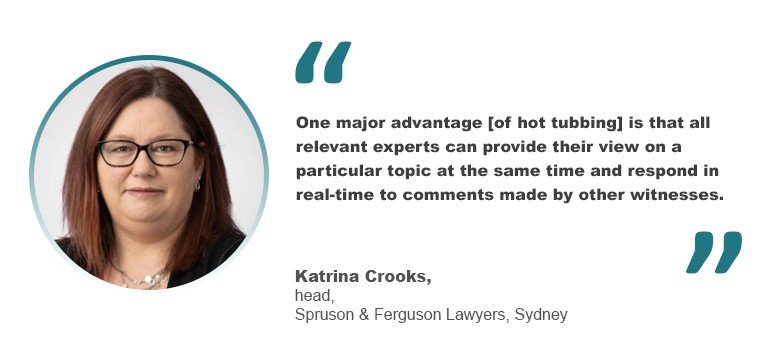
- Concurrent expert testimony makes the respective positions of each witness easier to understand. It cuts through the technical complexity and gets to the core of the matter as the experts can explain the key differences between them.
“One major advantage is that all relevant experts can provide their view on a particular topic at the same time and respond in real-time to comments made by other witnesses,” said Katrina Crooks, head of Spruson & Ferguson in Sydney. “Under traditional cross-examination of expert witnesses, comments made by each of them on a topic could take place days apart and without the opportunity to respond directly to the comments of the other witnesses, which can make it more difficult to understand the respective positions of each witness on that topic.”
In contrast, with concurrent expert testimony, she noted: “One expert can seek to explain the answer of another expert. This also assists the parties as they can see the areas that they need to focus on when addressing the judge during the hearing and in closing submissions. It also can greatly assist the court.” - On the part of the judge, concurrent evidence allows for some interactive clarification on factual matters and technical issues. This puts the judge in a better position to test the expert evidence.
- Hot tubbing provides expert witnesses with a better experience. “Experts feel that their skill, knowledge and professional accomplishments are given appropriate weight, and they are accorded respect by being able to engage in a discussion with their expert colleagues and ask them questions or challenge their views on issues in dispute,” Shoolman explained.
Australia: The hub for hot tubs
Hot tubbing is routinely used in patent litigation in the Australian Federal Court. Indeed, Australia leads the way in utilizing this litigation method.
“Most patent cases in which our firm acts now involve hot tubbing, sometimes involving four to five experts giving evidence at one time. Australian Federal Court judges appear to find the process advantageous,” Crooks told Asia IP.
Shoolman has also worked on cases that used concurrent evidence. She related one of these: “As the experts had already conferred and produced joint expert reports for the different fields of expertise before going into the hot tub, the dispute was narrowed. In the hot tub, one expert was not willing to change his views even when it was clear that concessions should be made. This was easier to see in the hot tub where, by way of comparison, the other experts made concessions in circumstances where making the concession was appropriate. The failure by the expert to make any concessions damaged the other party’s case as their witness did not come across as credible.”
How did it facilitate the resolution of the case? It helped the judge decide to give less weight to the evidence provided by the expert who was not willing to change his views. Instead, the judge relied on the evidence of the other experts. Having the experts give their evidence side by side made it easier for the judge to arrive at his decision.
She cited another case handled by her firm that used this litigation method. “There were three hot tubs comprised of various experts on different issues in dispute. Having the experts giving evidence together really did bring the issues to the fore and the divergence of opinions. The judge asked questions, which the experts made efforts to assist with, and it became clear to the parties the matters the judge was grappling with. The experts expressed satisfaction with the process in terms of being able to get their views across. It was overall a less adversarial and more collegiate atmosphere than a traditional cross-examination with the experts showing respect and being cordial with each other.”
The result: Not only were the technical issues clarified. The core issues for determination were also revealed.
Hot tubbing in Singapore and India
Is hot tubbing also popular in Singapore?
“Popular” may not be the right word, said Lim, but it is not uncommon. “It is considered and used when the perception is that it would be beneficial,” he explained.
One particular case his firm handled had five experts from three different fields of specialization. The experts were discussing an incident at an offshore oil field. They made a presentation in a single afternoon. The following day, the cross-examination of both parties took place. Such a process could have easily taken three to five days of the hearing. “All in all, it was less than two days. We could bounce one answer off another expert immediately, clarify words and terms used and guide the discussion by our pointed questions to the conclusions that we wanted – all with the counterparty’s experts on board,” shared Lim.
Another case they handled involved over 50 discreet issues which the judge needed to decide upon. There were two experts in the hot tub and the parties allotted four days for the litigation process. “We ended up using only one day because the hot tub was effectively used. The experts could ‘speak’ to each other’s comments in a disciplined and controlled discussion which helped to identify who was being truly objective and helpful,” Lim said.
In India, the concept of hot tubbing is not alien and is being deliberated to the extent to which it can be adopted.
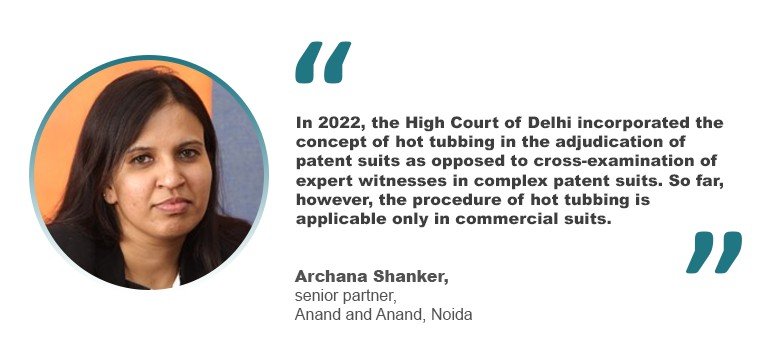
“In 2022, the High Court of Delhi Rules Governing Patent Suits, 2022 that came into effect in February 2022 incorporated the concept of hot tubbing in the adjudication of patent suits as opposed to cross-examination of expert witnesses in complex patent suits. So far, however, the procedure of hot tubbing is applicable only in commercial suits,” said Archana Shanker, a senior partner and head of patents and designs at Anand and Anand in Noida.
One such case in India that might just employ this litigation technique is F-Hoffmann-La Roche & Anr v. Zydus Lifesciences, a patent infringement suit involving two patents in connection to pertuzumab, a targeted cancer drug used in inhibiting tumour growth in the breast. On February 23, 2024, the Delhi High Court raised the possibility of using hot tubbing to resolve the case.
Disadvantages of hot tubbing
Hot tubbing isn’t a perfect litigation technique though. There are disadvantages to using the process. Some of these are as follows:
- The success of hot tubbing is heavily dependent on the experience of the lawyers and the court or tribunal in ensuring discipline in the process.
- There could be a tendency for the more confident or assertive expert to dominate the discussions and overshadow or overwhelm the others.
- Hot tubbing runs the risk of having one expert defer to the opinions of another more senior expert due to seniority. This is especially true if the experts involved know each other. “This is less likely to occur when each expert gives evidence separately,” Crooks said.
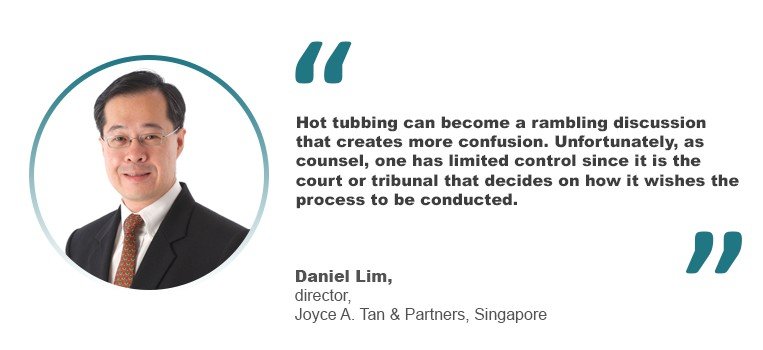
- The process may also get out of hand and veer off course with the experts taking up issues that are not material to the discussion. Lim explained: “By getting out of hand, I mean a situation where there is no limit to, or control over, who gets to speak and ask questions. It can become a rambling discussion that creates more confusion. Unfortunately, as counsel, one has limited control since it is the court or tribunal that decides on how it wishes the process to be conducted.”
- Selection of experts may be a challenge.
Still, Shoolman and Lim believe in the merits of concurrent evidence as a litigation process.
“Overall, I believe hot tubbing is a useful technique that effectively limits the issues in dispute and assists the court. I support its use,” declared Shoolman.
“I am generally in favour of the technique,” said Lim, “but with an eye that it might get out of hand.”
According to him,there must be discipline in the process. Citing an example, Lim explained that in such a process, each party gets their time to cross-examine, one after the other. Then comes a clean-up clarification stage which is equivalent to a re-examination of one party after the other. The court or tribunal can then ask their questions, which Lim noted is a good indicator of how much is being understood. This should perhaps be followed by a final clarification round. “To be sure, the questions at any time can include asking one expert to speak to what another expert has said,” Lim added.
Australia continues to blaze the trail in the use of hot tubbing. Concurrent evidence is not just used in patent litigation in Australian courts; it is also used in other civil cases such as medical litigation, insurance cases and even criminal cases.
Hot tubbing has also found its way in Singapore and India. According to a report, even courts in the United States, United Kingdom, Canada, New Zealand, Hong Kong, Austria and Japan are now testing the waters in the hot tub, so to speak.
Do you believe courts in your jurisdiction ought to dip their feet in the hot tub as well?






